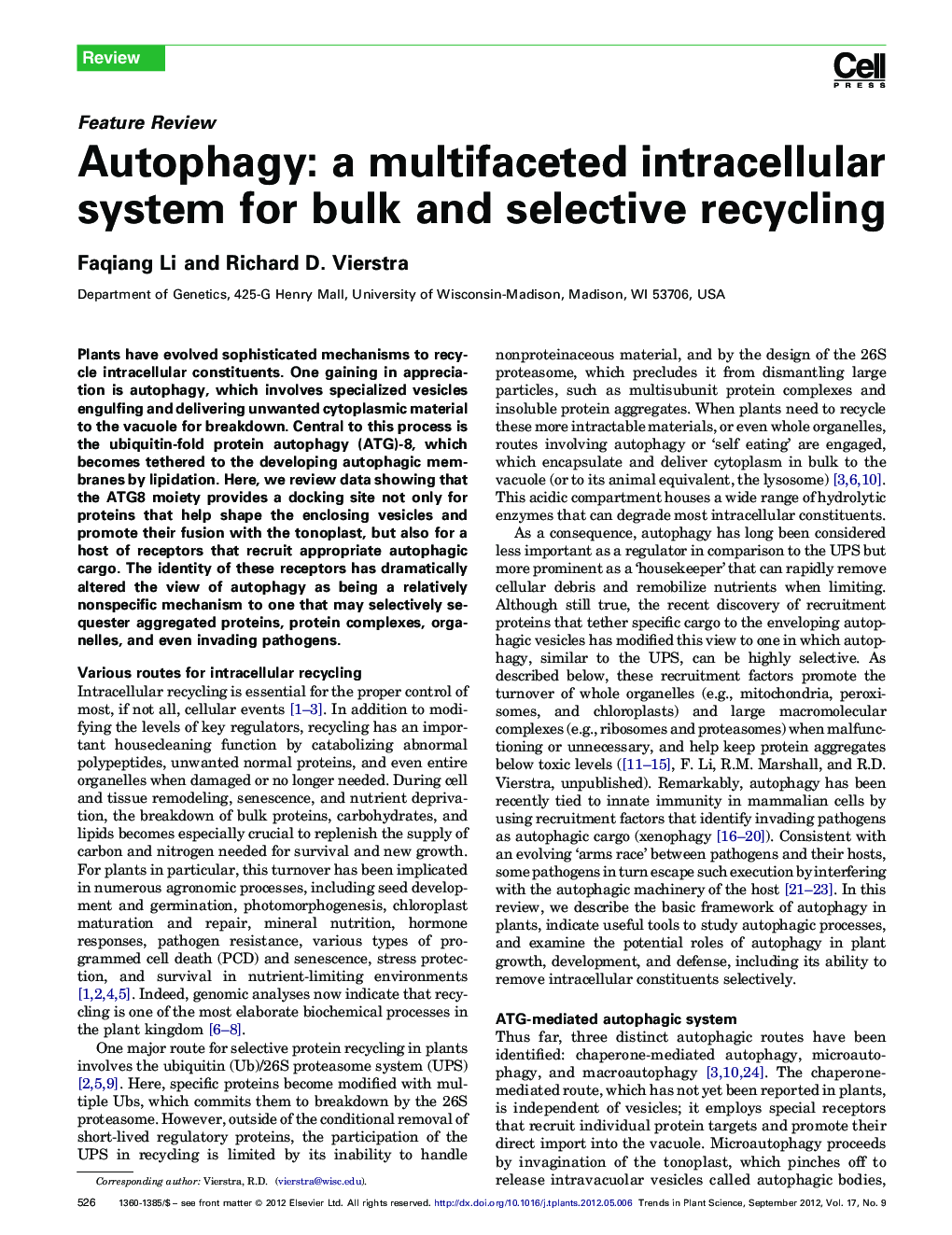| Article ID | Journal | Published Year | Pages | File Type |
|---|---|---|---|---|
| 2826320 | Trends in Plant Science | 2012 | 12 Pages |
Plants have evolved sophisticated mechanisms to recycle intracellular constituents. One gaining in appreciation is autophagy, which involves specialized vesicles engulfing and delivering unwanted cytoplasmic material to the vacuole for breakdown. Central to this process is the ubiquitin-fold protein autophagy (ATG)-8, which becomes tethered to the developing autophagic membranes by lipidation. Here, we review data showing that the ATG8 moiety provides a docking site not only for proteins that help shape the enclosing vesicles and promote their fusion with the tonoplast, but also for a host of receptors that recruit appropriate autophagic cargo. The identity of these receptors has dramatically altered the view of autophagy as being a relatively nonspecific mechanism to one that may selectively sequester aggregated proteins, protein complexes, organelles, and even invading pathogens.
